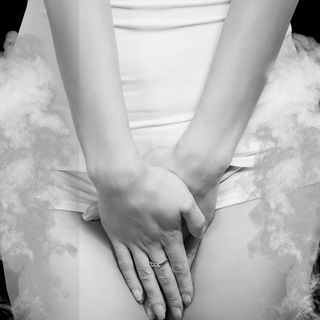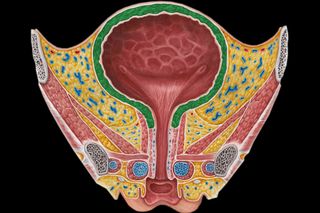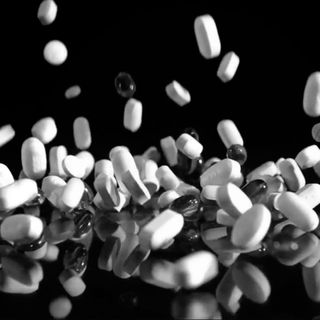
Why Women Are More Prone to Urinary Tract Infections Than Men
It’s not (just) because Nature hates us.

Urinary tract infections (UTIs) are one of the most common kinds of infections — and women are as many as 30 times more prone to UTIs than men are. The urinary tract ends in one of the body’s two waste orifices, so, it sees a lot of bacteria. The problem occurs when the wrong kind of bacteria enter from the wrong end of the tract.
What is a urinary tract infection?
A urinary tract infection occurs when fecal bacteria enter the urethra, the tube through which urine is excreted from the bladder. Sexually transmitted bacteria can also enter the urethra and cause an infection.
There are three types of urinary tract infections. The first, urethritis, is an infection localized to the urethra. When an infection spreads from the urethra to the bladder, it is known as cystitis. These two infections are the most common and easily cured, but it is possible for an infection to spread from the bladder to the kidneys. The kidneys filter waste from the blood, passing the waste on for collection in the bladder. A kidney infection is much more serious and rare.
Why are women more prone to urinary tract infections than men?
It boils down to basic anatomy. Women’s urethras are located closer to their anuses, creating more opportunity for bacteria to infiltrate. Women’s urethras are also shorter than men’s, which makes it easier for bacteria to reach the bladder. Also, women’s hormonal fluctuations across their menstrual cycle can increase their susceptibility to infection.
Pregnancy also increases the risk of a UTI. According to the American Pregnancy Association, “the uterus sits directly on top of the bladder. As the uterus grows, its increased weight can block the drainage of urine from the bladder, causing an infection.” Women also go through menopause, which affects the infection-fighting good bacteria in the vagina making the nearby urinary tract more vulnerable, according to a Harvard Health Publishing article. And finally, there is thought to be a genetic factor as well, as women’s susceptibility to UTIs tends to run in families.
There are also bio-social reasons why women are more prone to UTIs than men. For instance, certain menstrual products, like reusable pads, and lack of access to hygienic menstrual products and hygienic facilities, can increase the risk of a UTI.
What are the symptoms of a urinary tract infection?
According to the Mayo Clinic, the symptoms of a urinary tract infection may include the following:
- Intense and lasting need to urinate
- Burning during urination
- Frequent urination in small amounts
- Cloudy urine, or urine that is red, pink or brown-ish in color
- Exceptionally odorous urine
- And for women, pelvic pain, “especially in the center of the pelvis and around the area of the pubic bone.”
And like any infection, UTIs may also cause chills and fever.
That said, UTIs don’t always cause these symptoms. Especially in elderly individuals, UTIs manifest in other, more subtle ways. According to Senior Living, UTIs in elderly people may be spotted by sudden and/or unusual “confusion, disorientation, agitation, poor motor skills, dizziness, falling, [and] sometimes even depression.” This is because UTIs often make people dehydrated, which can affect whether and how any medication an elderly person is taking works. Infections of any kind can also “cause an increase in temperature and brain inflammation,” which can affect mental state and function.
Related on The Swaddle:
The Super Common, Mostly Treatable Women’s Health Problem No One Talks About
How do you diagnose and treat a UTI?
Most UTIs are diagnosed via a urine sample, collected mid-stream (not the initial drops), according to the Mayo Clinic. This will likely be followed up with a lab culture of your urine in order to determine precisely which bacteria strain is behind the infection. This will allow your doctor to prescribe the right antibiotic able to fight that bacteria.
Cranberry juice and cranberry-based products have been touted as a natural means of healing UTIs. These methods have been extensively studied, and while there is some support for their effectiveness, overall, per the Mayo Clinic, the evidence is inconclusive. (There is more evidence that supports cranberry products as a preventative measure, rather than a cure.) Most experts advise discussing with a doctor before embarking on using cranberry juice or tablets to heal a UTI.
Repeat UTIs or more severe infections may require imaging, or a cystoscopy, which allows a doctor to see inside the urethra and bladder. Severe UTIs may also require treatment with antibiotics via an IV.
Why do UTIs come back?
The short answer: shrug. “Recurrent UTIs aren’t due to poor hygiene or something else that women have brought on themselves. Some women are just prone to UTIs,” says infectious diseases specialist Dr. Kalpana Gupta, a lecturer in medicine at Harvard Medical School, in the article published by Harvard Health Publishing.
Is there anything you can do to prevent a UTI?
“It’s thought that sex increases the number of bacteria in the bladder, and many experts advise women to urinate after sex to flush them out,” according to the Harvard Health Publishing article.
Experts also advise staying well hydrated; water is recommended more than other beverages. Also, remember that cranberry juice? According to the Harvard Health Publishing article, drinking 8 ounces of cranberry juice a day for at least six months may also help prevent a UTI from recurring.
And for menopausal women, hormone therapy may help maintain a protective level of vaginal flora.
Liesl Goecker is The Swaddle's managing editor.
Related


What Are Opioid Painkillers and How Do They Lead to Addiction?
